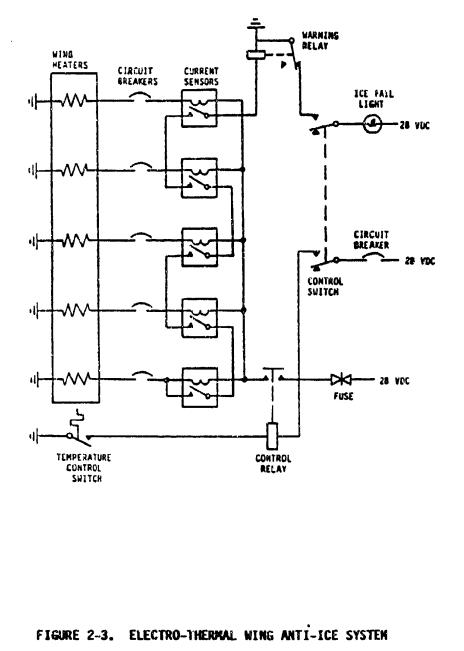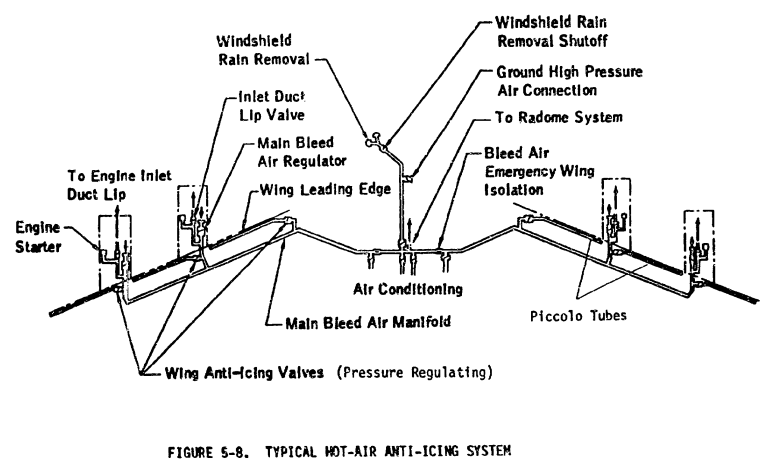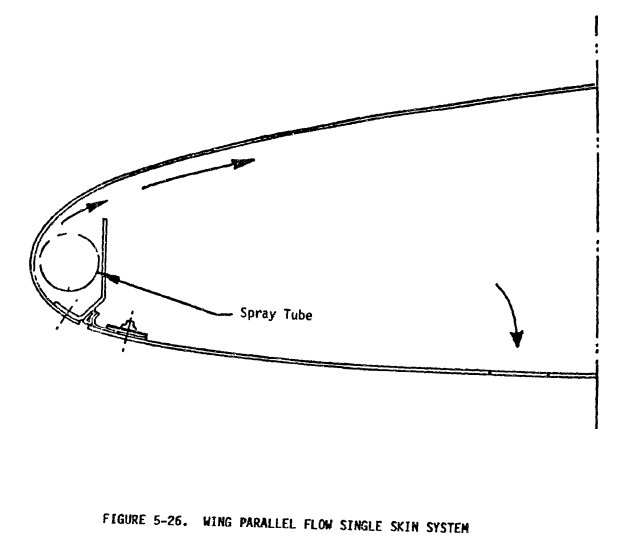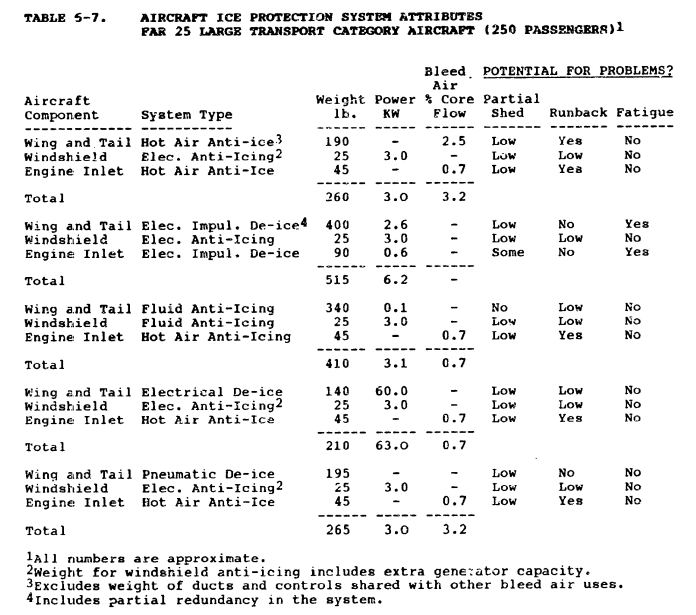Several areas of the airplane may require ice protection:

from ADS-4 (1963)
Forms of ice protection
There are several forms of ice protection used on airplanes. The most commonly used for is thermal ice protection, which provides heat to the area to be protected.
Thermal ice protection provides "Anti-Icing" protection. Anti-icing with enough heating to prevent the formation of ice by evaporating all of the impinging water is termed "Fully evaporative anti-icing". This can be a demanding amount of power for large areas.
At lower power, "Running Wet" protection prevents ice over the heated area, but may not evaporate all of the water, which can freeze further aft of the heated area and form "Runback Ice". Analysis and test is required to show that the runback ice is acceptable.
Runback ice on an airfoil with a heated leading edge from a laboratory test:

From "Evaluation of Alternative Altitude Scaling Methods for Thermal Ice Protection System in NASA Icing Research Tunnel" ntrs.nasa.gov
The thermal protection may be intermittently turned on to provide "De-icing" protection. Analysis and test is required to show that ice that forms while the system is not on is acceptable.
On some aircraft, a portion of the wing span is protected (not the entire span). This minimizes the heating power required. Analysis and test is required to show that the ice in unprotected areas is acceptable.
Electrothermal heating
The heat sources commonly used are electrical heating (often for smaller components), or hot compressed air from jet engines.
Typical electro-thermal ice protection:

from DOT/FAA/CT-88/8-2. apps.dtic.mil

from DOT/FAA/CT-88/8-2. apps.dtic.mil
Hot air heating
Typical hot-air ice protection:

from DOT/FAA/CT-88/8-2. apps.dtic.mil

from DOT/FAA/CT-88/8-2. apps.dtic.mil
Other forms of ice protection
Other forms of ice protection include fluids that are freezing point depressants, such as glycol (similar to the anti-freeze used in automobiles). Another form of protection is deformation of the surface so that ice breaks off. This can be applied through pneumatic pressure, or electro-mechanical actuators.
Design selection of the form of ice protection
The "Aircraft Icing Handbook" DOT/FAA/CT-88/8-2 apps.dtic.mil includes:
It should be noted that there is no one best system for use on all types of aircraft and each aircraft represents an independent design problem for ice protection.
Each form of ice protection has advantages and disadvantages. Different airplane sizes, power sources, and flight profiles may favor one form over another. Complex trade studies are conducted in the design of new aircraft to determine the least costly form of ice protection to use.

Ice protection trade study data for one aircraft. From DOT/FAA/CT-88/8-2. apps.dtic.mil.
Resources
"Aircraft Icing Handbook Volume 2", DOT/FAA/CT-88/8-2. apps.dtic.mil
"Electronic Aircraft Icing Handbook", circa 2007 web.archive.org
This web page contains basic information on aircraft icing. Information placed on this page can be used to update or supplement information in the existing Aircraft Icing Handbook (AIHB). Update material can be printed out and inserted in the AIHB. The files on this page are referenced to those sections of the AIHB which they update or supplement, but are self-contained, not requiring consultation of the AIHB for their use. When appropriate the text information on this site is accompanied by spreadsheet or other files intended to enhance the value of the information to users.
This includes format updates for DOT/FAA/CT-88/8-2 "Chapter III Ice Protection Methods".
Blog series on Ice Protection
skybrary.aero Chapter 15 Ice and Rain Protection pdf Has many pictures of ice protection system components.
Related
This is part of The Basics series.